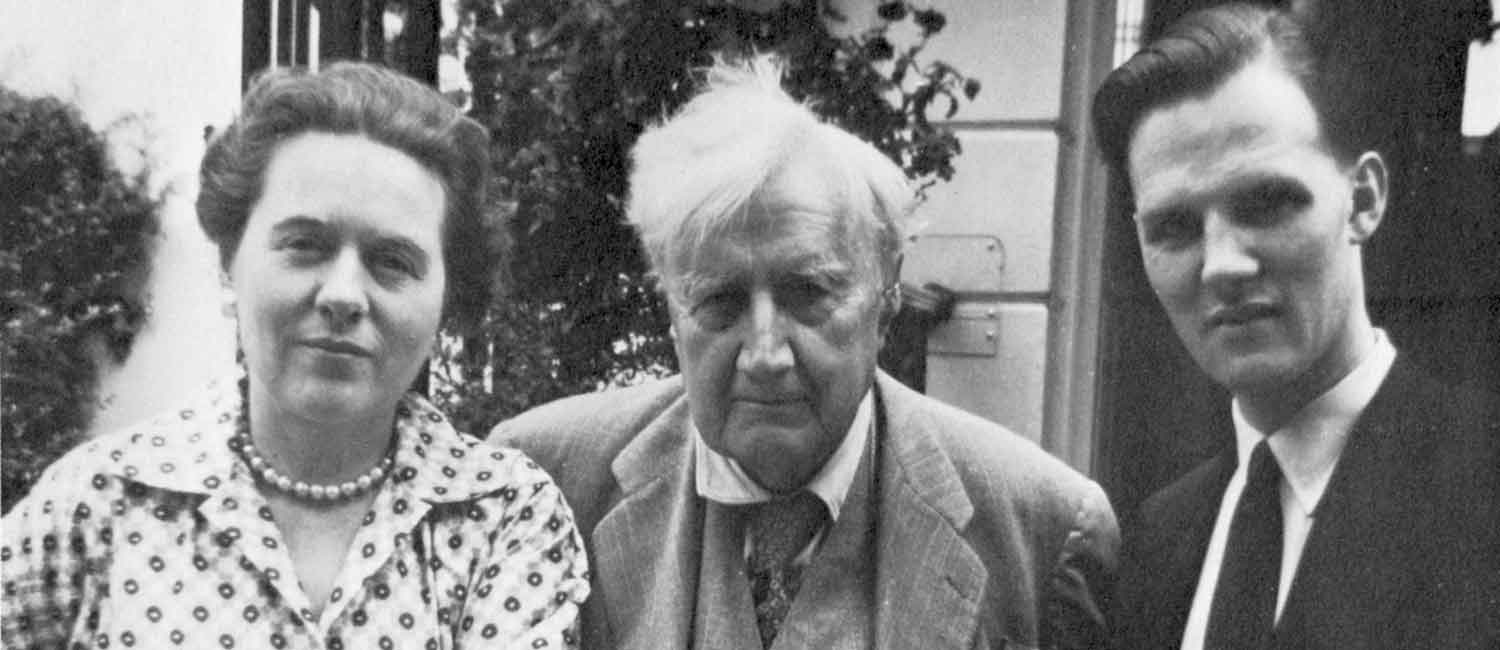
IT IS WITH GREAT SADNESS THAT WE ANNOUNCE THE PASSING OF OUR PRESIDENT SIR ANDREW DAVIS CBE. R.I.P.

Symphonies
The You Tube videos are arranged into sections. Vaughan Williams’s output was huge so only a small selection could be made. The clips are not always ones that we necessarily regard as the best, but serve more than adequately to illustrate the range and diversity of the composer’s output. By arranging them into sections we hope that it will be helpful to those who are less familiar with the composer’s work.
A short introduction to Vaughan Williams’s nine symphonies by Society member Colin Lees.
A SEA SYMPHONY
Symphony No 1
Words by Whitman. Completed and first performed in Leeds on VW’s 38th birthday, 12th October, 1910. This symphony caused great excitement when it was first heard. Seven years in gestation. “Big stuff with impertinences”, is how Hubert Parry described it.
A LONDON SYMPHONY
Symphony No 2
Of his own symphonies, VW said that this was probably his favourite. First performed in 1914. Packed with tunes and ideas and full of visual references. The Thames in fog, street sellers, Westminster chimes, hustle and bustle – all are in this work. Written when he lived by the river at Cheyne Walk in Chelsea. Encouraged by his friend George Butterworth.
A PASTORAL SYMPHONY
Symphony No 3
First performed under Sir Adrian Boult on January 26, 1922 at Queen’s Hall. A haunting work, the symphony was misunderstood at the time. The symphony was conceived while VW was on military service in Northern France and reflects his yearning for home. The spectacular sunsets over the killing fields were ironic images which inspired him.
SYMPHONY NO. 4
IN F MINOR
VW famously remarked of this symphony, ‘I don’t know if I like it, but it’s what I meant’. He denied that the symphony prophesised war in Europe. Nevertheless, the work is angry and menacing with a defiant ending and came as a shock to audiences after the Pastoral. First performed on 10 April, 1935, to huge acclaim.
SYMPHONY NO. 5
IN D MAJOR
Again, a complete contrast from the preceding work. Parts of it contain material from the then unfinished opera ‘Pilgrim’s Progress’. Composed between 1938-43. A beautifully serene work but with tension at its core. First performed with VW conducting at the Royal Albert Hall in June 1943 and dedicated to Sibelius, ‘without permission’.
SYMPHONY NO. 6
IN E MINOR
Composed between 1944-47 and first performed under Boult on 21 April 1948. Like Symphony No 4, a menacing work, with whirling and devilish impressions. Contains a bizarre tuba solo as well as a rombustious scherzo and jazzy syncopations. The second movement recalls the Mars of Gustav Holst while the wonderful pianissimo finale gives the impression of drifting in timelessness and space.
SYMPHONY NO. 7
‘SINFONIA ANTARTICA’
Much of this symphony was taken from material used for the film, Scott of the Antarctic. First performed by the Hallé Orchestra under Barbirolli on 14 January 1953. It called for the largest orchestra ever employed by VW, and uses a piano, a wind machine, gongs, organ, glockenspiel, celesta, xylophone and vibraphone as well as human voice.
SYMPHONY NO. 8
IN D MINOR
Dedicated to Sir John Barbirolli and first performed on 2 May 1956 in Manchester’s Free Trade Hall by the Hallé Orchestra and Barbirolli conducting. Using an exotic instrument combination, this is the shortest of the symphonies. VW called the first movement, ‘seven variations in search of a theme’.
SYMPHONY NO. 9
IN E MINOR
Composed in 1956-7 and revised in 1958, the year of the composer’s death, the symphony was first performed under Sir Malcolm Sargent on 2 April 1958. Despite his great age and despite revisiting ideas explored much earlier, the music is innovative and predicts a new phase in VW’s musical journey. Many of the ideas evoke scenes from Thomas Hardy’s novel ‘Tess’, a work which fired his imagination enough to conduct a walk in the ‘footsteps of’ with his lifelong friend Gustav Holst.
Contact Information
To contact Officers of the Ralph Vaughan Williams Society please click on the links.
Publicity & Events Officer
(To publicise events, recordings, publications)
Journal Editor
(To send us articles)
Information Officer
(All matters relating to RVW)
Albion Records
(The RVW Society recording label)
© THE RALPH VAUGHAN WILLIAMS SOCIETY | ACKNOWLEDGEMENTS AND COPYRIGHT | LEGAL | PRIVACY
